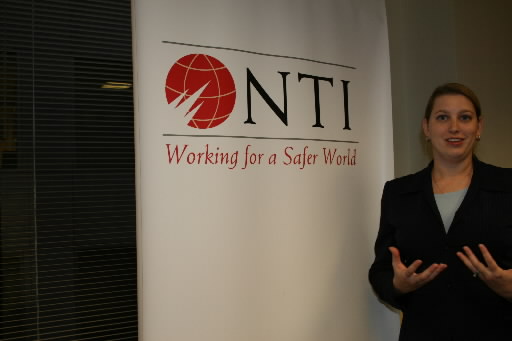Nuclear weapons can be eliminated: Chapter 1, Part 4
Mar. 14, 2009
Chapter 1: Superpower at a turning point
Part 4: Repercussions of newspaper articles
by Yumi Kanazaki, Staff Writer
Leaders of countries throughout the world offer their support
The offices of the Nuclear Threat Initiative, a non-governmental organization working to prevent the proliferation of nuclear weapons, are located on the seventh floor of a building just 300 meters from the White House, where newly inaugurated President Barack Obama has taken up residence.
NTI serves as the general secretariat of the Nuclear Security Project, which supports the efforts of former U.S. Secretary of State George Schulz and three others whose articles titled “A World Free of Nuclear Weapons” and “Toward a Nuclear-Free World” appeared in a U.S. newspaper. One of the four, former Sen. Sam Nunn, also serves as co-chairman of NTI.
The articles were published in January 2007 and January 2008. There have been global repercussions as the leaders of countries and high-ranking officials throughout the world offer their support.
Corey Hinderstein, 35, director of NTI’s international program, said, “The publication of the articles was just the beginning. The four men involved in issuing them have agreed that they would like to take measures that will lead to dialogue on a global level.” The secretariat, which was created just after publication of the first article, has made direct contact with key people in many countries to ask for their support.
Ms. Hinderstein emphasized the originality of the articles. “They linked the call for nuclear non-proliferation with the issue of disarmament and presented concrete steps for the abolition of nuclear weapons,” she said. With this practical, step-by-step approach, the abolition of nuclear weapons is not an unrealistic wish, it’s an achievable goal, she said. She added that, at the same time, those who are skeptical about the possibility of nuclear abolition have accepted the proposal as a measure that will gradually bring about global security.
The Center for a New American Security, whose office is also near the White House, is another group working for a nuclear-free world. Likening the effort to climbing a mountain, its Project Base Camp sets out to achieve the goal of a nuclear-free world, or “mountain top,” from the standpoint of security strategy, identifying the security challenges along the “mountain trail.”
Nirav Patel, a Bacevich Fellow who is working on the project, described their progress. “We’re headed for the first camp and figuring out how many complex problems we’ll have to overcome to get there. What about the theory of nuclear deterrence? What about China’s reaction? There are many obstacles we must overcome.” He said their goal is to issue their first report as early as February.
But some groups have criticized this effort saying that it is predicated on the assumption that the U.S. will maintain overwhelming global superiority and is basically a nuclear abolition theory that protects the national interest of the U.S.
The Women’s International League for Peace and Freedom, a non-governmental organization with offices opposite United Nations headquarters in New York, is one of the plan’s critics. Ray Acheson, 27, a staff member in Reaching Critical Will, the group’s disarmament department, said, “The abolition of nuclear weapons must be discussed along with large-scale disarmament.” These dialogues must put participating countries on an equal footing, she said.
Newspaper articles by four prominent leaders
The proposals in the first article, published in 2007, included: 1) cuts in the nuclear capabilities of all nuclear nations, 2) cooperation in resolving regional conflicts, and 3) the highest possible standards of security for weapons-grade plutonium and highly enriched uranium. The second article, published in 2008, included: 1) an increase in the warning and decision times for the launch of ballistic missiles, 2) enhanced monitoring to ensure compliance with the terms of the Nuclear Non-proliferation Treaty, and 3) initiation of the process to put the Comprehensive Nuclear Test Ban Treaty into effect.
(Originally published on February 14, 2009)
To comment on this article, please click the link below. Comments will be moderated and posted in a timely fashion. Comments may also appear in the Chugoku Shimbun newspaper.








